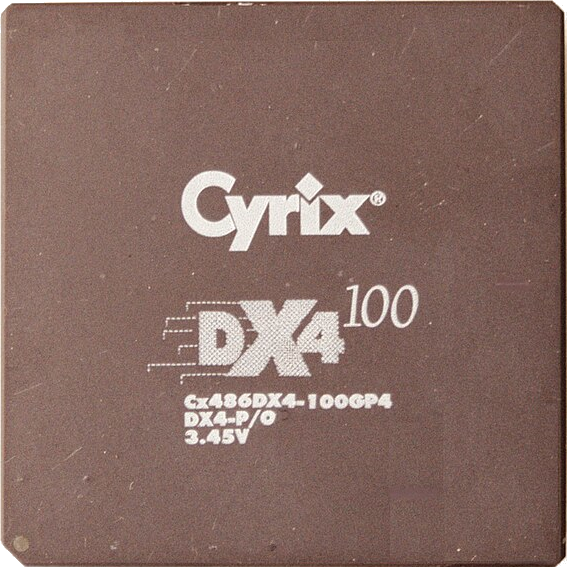I’m in the process of wiring a home before moving in and getting excited about running 10g from my server to the computer. Then I see 25g gear isn’t that much more expensive so I might was well run at least one fiber line. But what kind of three node ceph monster will it take to make use of any of this bandwidth (plus run all my Proxmox VMs and LXCs in HA) and how much heat will I have to deal with. What’s your experience with high speed homelab NAS builds and the electric bill shock that comes later? Epyc 7002 series looks perfect but seems to idle high.
My pi costs probably around 20 a year lol.
I’ve got a 3 node Proxmox/ceph cluster with 10G, plus a separate Nas. They are all rack mount with dual PSU. Add in the necessary switching, and my average load is about 800w. Throw my desktop (also on 10G) into the mix and it runs 1.1kw.
That’s roughly $50-60 extra in electricity costs for me monthly.
Would be around 300€ in Germany, on a cheap contract. Limiting myself to one combined NAS/application server atm, with the others turned on only if I want to try sth out.
deleted by creator
Average load 800W is 0.8kW24h30d=576kWh/M
Which is over 172€ on a 30ct/kWh contract.
Wow! I’m paying 10.5¢/kWh for electricity at home here in the US; it’s a little below the national average but not dramatically.
Yeah, we pay a lot. We also got one of the lowest downtimes regarding electricity, on average approximately 10minutes per year…so that’s kind of a (small) advantage you get for the premium price
I’m afraid of dumping 500+ watts into a (air conditioned) closet. How are you able to saturate the 10g? I had some idea that ceph speed is that of the slowest drive, so even SATA SSDs won’t fill the bucket. I imagine this is due to file redundancy not parity/striping spreading the data. I’d like to stick to lower power consumer gear but ceph looks CPU, RAM, and bandwidth (storage and network) hungry plus low latency.
I ran proxmox/ceph over 1GB on e-waste mini PCs and it was… unreliable. Now my NAS is my HA storage but I’m not thrilled to beat up QLC NAND for hobby VMs.
My 10G is far from saturated, but I do try and keep things using RAM where possible. I figure that with 100gb of DDR4 in my main server, that should be able to provide enough speed for a 10G link.
I’ve got ceph running on Intel Enterprise SSDs, so they are pretty quick.
I also tried running ceph on 1G. I found it unreliable as well.
I ise about the same. But that is more due to the hardware I got being a bit older. 2 dell R710s 1 R510 and a custom build server. Everything is still 1g. In my case electricity is not a big deal due to solar. We produce much more then we can use our self.
Around 100 Watts for
- NAS with 4x3.5" HDD,
- Minisforum HM90 for Proxmox with 2x2.5" HDDs,
- 16 Port TP Link PoE Switch,
- TP Link router
- 2x Raspberry Pi 4b
But everything with gigabit speed. Doesnt need more at home
Minisforum HM90 for Proxmox with 2x2.5" HDDs
How did you connect HDDs to that thing?
Inside the bottom tray you have two cutouts in order to put two 2.5" HDDs/SSDs in
Well look at that, it sure does. Too bad they don’t make those anymore.
If you’re just running home automation, you do not need an Epyc 🤣
Get a low power anything to just run what you need.
I looked at Epyc because I wanted to bandwidth to run u.2 drives at full speed and it wasn’t until Epyc or Threadripper that you could get much more than 40 lanes in a single socket. I’ve got to find another way to saturate 10g and give up on 25g. My home automation is run on a Home Assistant Yellow and works perfectly, for what it does.
Some unsolicited advice then: don’t go LOOKING for reasons to use the absolute max of what your hardware is capable of just because you can. You just end up spending more money 🤑
For real though, just get an N100 or something that does what you need. You don’t need to waste money and power on an Epyc if it just sits idle 99% of the time.
What I need is a 10g storage for my Adobe suite that I can access from my MacBook. I need redundant, fault tolerant storage for my precious data. I need my self hosted services to be high availability. What’s the minimum spec to reach that? I started on the u.2 path when I saw enterprise u.2 drives at similar cost per GB as SATA SSDs but faster and crazy endurance. And when my kid wants to run a Minecraft server with mods for him and his friends, I better have some spare CPU cycles and RAM to keep up.
You could technically do that from like 2x ~$150 used business desktop PCs off ebay, 10th gen Intel CPU models or around there with Core i3/i5 CPUs.
Throw some M.2 SSDs in each one in a mirror array for storage, add a bit of additional RAM if needed and a 10G NIC. Would probably use about 30-40W total for both of them.
Minecraft servers are easy to run, they don’t need much especially on a fairly modern CPU with high single thread performance, and only use maybe 6GB of RAM for a modded one.
You’re not asking for a whole lot out of the hardware, so you could do it cheap if you wanted to.
Get a Drobo if you’re that worried about that kind of access then. Make it simple.
Otherwise anything with two NICs is the same thing.
I just moved my home assistant docker container to a new-to-me Xeon system. It also runs a couple basically idle tasks/containers, so I threw BOINC at it to put it to good use. All wrapped up with Debian 12 on proxmox…
(I needed USB support for zigbee in ha, and synology yanked driver support from dsm with the latest major version, so ‘let’s just use the new machine’…)
I’m running my smart home entirely from a single NUC running proxmox with VMs and LXCs for my services. It’s pulling ~7W on average
You most likely won’t utilize these speeds in a home lab, but I understand why you want them. I do too. I settled for 2.5GBit because that was a sweet spot in terms of speed, cost and power draw. In total, I idle at about 60W for following systems:
- Lenovo M90q (i7 10700, 32GB, 3 x 1 TB SSD) running Proxmox, 15W idle
- Custom NAS (Ryzen 2400G, 16GB, 4x12TB HDD)v running Truenas (30W idle)
- Firewall (N5105, 8GB) running OPNsense (8W idle)
- FritzBox 6660 Cable, which functions as a glorified access point, 10W idle
With 25 GbE, even 10, I’d be tempted to PXE boot client systems. Maybe still have a local PCIe SSD for windows game files.
Dunno how that would actually work with Windows, but it was fun when I did it for beowulf nodes. Setting RPis to netboot is a little involved, but you can create an OSMC image and give all your TVs a consistent ‘smart’ interface. You don’t even need 10GbE to be pretty functional for the Pi, but my experience is that WiFi is not fast enough.
Acronyms, initialisms, abbreviations, contractions, and other phrases which expand to something larger, that I’ve seen in this thread:
Fewer Letters More Letters AP WiFi Access Point DHCP Dynamic Host Configuration Protocol, automates assignment of IPs when connecting to a network DNS Domain Name Service/System HA Home Assistant automation software ~ High Availability LXC Linux Containers NAS Network-Attached Storage NUC Next Unit of Computing brand of Intel small computers NVMe Non-Volatile Memory Express interface for mass storage PCIe Peripheral Component Interconnect Express PSU Power Supply Unit PiHole Network-wide ad-blocker (DNS sinkhole) PoE Power over Ethernet RPi Raspberry Pi brand of SBC SATA Serial AT Attachment interface for mass storage SBC Single-Board Computer SSD Solid State Drive mass storage Unifi Ubiquiti WiFi hardware brand VPS Virtual Private Server (opposed to shared hosting)
[Thread #782 for this sub, first seen 4th Jun 2024, 04:35] [FAQ] [Full list] [Contact] [Source code]
5 node proxmox cluster (each node on 40gbps networking[yes ceph…], ~80TB of SSD storage, 180cores, ~630GB of ram total)
1 slow storage node (~400TB)
2x opnsense servers in HA
2x icx7750s
2x icx7450sPoE to all the things… and 8gbps internet.
Usually run ~15-17amps. So about 2000 watts. It’s my baby datacenter.
Sometime this month I’ll be installing 25000kwh solar system on my roof and batteries.
As far as heat goes… It’s in the garage with an insulated door, heat pump water heater, and there’s a tripplite ac unit in the bottom of the rack. The waste air(from the a/c) exhausts outside through a direct vent in the wall. The garage is downright tolerable to me for extended periods of time. The servers don’t complain at all.
Reading about all you guys being under 200w or whatever makes me wonder if it’s worth it. Then I realize that the cost to do even a 1/4 of what I do in the cloud is more expensive than buying my solar.
Power costs for the rack is about $100-120 a month. If it wasn’t for solar.
Edit: 75 LXC containers, 22VMs.
Damn that’s a setup alright!
If you’re making use of the hardware it’s well worth it over anything cloud based for sure.
Edit: 75 LXC containers, 22VMs.
That’s a lot of power draw for so few VMs and containers. Any particular applications running that justify such a setup?
That’s total draw of the whole rack. No indicative of power per vm/lxc container. If I pop onto management on a particular box it’s only running at an average of 164 watts. So for all 5 processing nodes it’s actually 953 watts (average over the past 7 days). So if you’re wanting to quantify it that way, it’s about 10W per container.
Truenas is using 420 watts (30 spinning disks, 400+TiB raw storage…closer to 350 usable. Assuming 7 watts per spinning drive were at 210Watts in disks alone, spec sheet says 5 at idle and 10 at full speed). About 70 watts per firewall. Or 1515 for all the compute itself.
The other 1000-ish watts is spent on switches, PoE (8 cameras, 2 HDHR units, time server and clock module,whatever happens to be plugged in around the house using PoE). Some power would also be lost to the UPS as well because conversions aren’t perfect. Oh and the network KVM and pullout monitor/keyboard.
I think the difference here is that I’m taking my whole rack into account. Not looking at the power cost of just a server in isolation but also all the supporting stuff like networking. Max power draw on an icx7750 is 586Watts, Typical is 274 according to spec sheet. I have 2 of them trunked. Similar story with my icx7450s, 2 trunked and max power load is 935W each, but in this case specifically for PoE. Considering that I’m using a little shy of 1k on networking I have a lot of power overhead here that I’m not using. But I do have the 6x40gbps modules on the 7750.
With this setup I’m using ~50% of the memory I have available. I’m 2 node redundant, and if I was down 2 nodes I’d be at 80% capacity. Enough to add about 60GB more of services before I have to worry about shedding load if I were to see critical failures.
Just out of curiosity, what do you use all that storage for?
On the Sata SSD ceph storage. That’s just live stuff on the containers/vms. I’m at 20% usage of the 70TiB usable at the moment. I don’t use it all that heavily. Because of the way ceph works it’s really ~23 TiB of usable space and ~4.5 TiB written since it writes 3 copies in my cluster.
On the slow storage node it’s running Truenas with 28 spinning disks at 16TB each. 2 hot spares, and 2 ssds each for cache, log, and metadata (eating up total of 36 bays). That’s 342.8TiB usable after raidz nonsense. And I’m 56% usage. I have literally everything I’ve done that I cared to save from like 2005 or 2006 or so. Backups for the ceph storage (PBS). Backups for computers I’ve had over the years. Lots of linux ISOs(105TiB) archived, including complete sets of gaming (37TiB) variants. Oh and my full steam library as well which currently sits at 14TiB. Flashpoint takes up a few TiB as well…
125W (Less than $15/month) or so for
- Ryzen 9 3900X
- 64GB RAM
- 2x4TB NVMe (ZFS Mirror)
- 5x14TB HDD (ZFS RAID-Z2)
- 2.5GBe Network Card
- 5-port 2.5GBe Network Switch
- 5-port 1GBe POE Network Switch w/ one Reolink Camera attached
I generally leave
powerManagement.cpuFreqGovernor = "powersave"in my Nix config as well, which saves about 40W ($4/mo or so) for my typical load as best as I can tell, and I disable it if I’m doing bulk data processing on a time crunch.5950x in an matx board with 15 x 3.5in drives 1 x sata sad 1 x optane u.2 drive (pulls like 10watts) 1 x Nvidia A2000 1 x Lsi 9305 16i 1 x 2.5gbe intel nic 3 x 140 mm fans at full tilt
Runs at like 120 watts at idle, like 220 watts with a good amount of work and peaks at like 320 watts if I make it do a lot of work
What in the world…
Dafuq you doing over there?
The load on my UPS is around 100-140 watts. That includes my server, firewall, switch, starlink and a unifi access point. I would love to get that power consumption down. I only get 4-5 hours of runtime on battery. Also, the room it’s in is small and it gets really hot in the summer time.
I have an ITX Ryzen 2700X with an arc A380. 3 HDDs and 1 SSD boot drive.
Before some kernel improvements for the A380, my idle wattage was 60W. Without the A380 it was around 35W idle. I am hoping that it is around 45W now because of fixing the high idle wattage of the GPU but I have to measure again.
Performance is great though. Perfect Jellyfin streaming, home automation, document and media management, file sync, recipe management, etc…
People tend to over-spec their servers, in my opinion. Unless you are dealing with more than a few dozen clients or so on one server (or having a many-user dedicated streaming server), you really don’t need much.
My real server (Nextcloud/NAS/several more vm’s) uses 28 Watts on average. In addition, there is one Pi 4B running, and I don’t even know it’s wattage.
I’m planning on replacing the real server with a new one, with lots of cores and approx. 50 Watts then.
Pi4 tend to stick around 5w
I recently removed my 25Gbps PCIe dual port cards from my 2 servers because they were using 20W more. My entire rack including 2 UniFi PoE connections uses 90 W now (so 110 W just for having 25 Gpbs).
There is some heat from such cards, but usually it gets transported outside fine. The ones I bought did not come with a fan. I think you cannot operate them without one. The heat sinks get very hot.
- Fujitsu motherboard
- Intel pentium G5600
- 6 HDD (4 x 4 TB 2 x 8 TB) spinned down
- 2 SSD for proxmox
- 6 CT and no VM for now
it runs at 16W mostly idle











